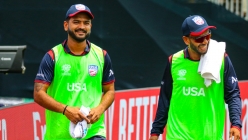Book Review: Caught Out - By Brian Radford
2011 Nov 10 by DreamCricket
While there are plenty of villains - Cronje, Shane Warne, Allen Stanford, Lalit Modi to name just a few - the heroes are few and include some surprising choices.
Now, you can get all the USA Cricket updates via Facebook. Also follow us on Twitter via @dreamcricket
Caught Out - By Brian Radford
[289 pages; GBP 17.99]; John Blake Publishing Ltd, London
Reviewed by Gulu Ezekiel
It is an eerie feeling reading this rather lurid book even as the sentence is being passed down on the three Pakistan cricketers, Salman Butt, Mohammad Asif and Mohammad Amir, by a court in London on corruption and fixing charges of which they have been found guilty.
The entire murky ‘spot-fixing’ episode from last year’s Lord’s Test match involving seemingly innocuous no-balls bowled deliberately for high stakes warrants a book of its own. The chapter dealing with this latest scandal in cricket is entitled ‘Disgraced Pakistan trio put their feet in it.’
There are 19 other chapters dealing with various murky episodes in international cricket. This range from Sachin Tendulkar wiping mud off the ball during the infamous Port Elizabeth Test of 2001 after which six Indian players received various forms of punishment, to the mother of all corruption charges, the Hansie Cronje affair of 2000.
It may seem odd that Mike Atherton’s ‘dirt in the pocket’ 1994 episode and Tendulkar’s innocent act are given equal billing to stories dealing with drug smuggling and taking, call-girl rings, death threats from the criminal underground and various other chilling acts.
But the author seems to think that all these come under the category of “Shocking Revelations of Corruption in International Cricket” as the cover boldly announces under the title of the book.
While there are plenty of villains—Cronje, Shane Warne, Allen Stanford, Lalit Modi to name just a few—the heroes are few and include some surprising choices.
The author is an obvious fan of controversial Australian umpire Darrell Hair who as usual paints himself as a martyr to cricket in his clumsy foreword. Hair had a starring role in the Oval walkout of 2006 involving the Pakistan team. But the umpire had by then earned himself a reputation for being a stickler for the letter rather than the spirit of the law and was unpopular with most cricket playing nations for his officious and overbearing manner.
Another unlikely hero is the Barmy Army, the raucous travelling band of English cricket supporters. Radford paints them in glowing colours and appears to accept their verdict as something approaching gospel truth on the legitimacy of matches around the world.
The chapters on the death of Pakistan coach Bob Woolmer in Jamaica during the 2007 World Cup and Cronje in a plane crash in South Africa a year earlier do not draw any conclusions of their own. They merely state the facts as the cases unfolded and leave it to the readers to reach their own judgment.
It is no coincidence that nearly a third of the chapters deal directly or indirectly with Pakistan cricket and cricketers. It has long been accepted—now set in stone after the London court verdicts—that Pakistan cricketers have been at the forefront of numerous acts of skullduggery over the past few decades. The Pakistan Cricket Board is no less complicit and its dysfunctionality is a running joke even among diehard Pakistan cricket fans.
The International Cricket Council too hardly emerges with glowing colours. Indeed, this latest sordid chapter would not have unfolded but for the daring exposure of the UK tabloid, News of the World. It is another matter that the newspaper itself came to an ignoble end earlier this year.
Reading the shocking contents of this book leaves one drained and somewhat cynical. Who to believe and who not to as one skeleton after another comes tumbling out of cricket’s cupboard of shame?
But then one has to admit at the end of it all, that the book has the effect on the reader akin to that of a car crash. No matter how hard you try, you can’t evade your eyes from it. And it is clear that corruption has come to stay in cricket.
Someone had to write this account and it is to Radford’s credit that he took up the challenge. In that sense it is both distressing and an eye-opener.




